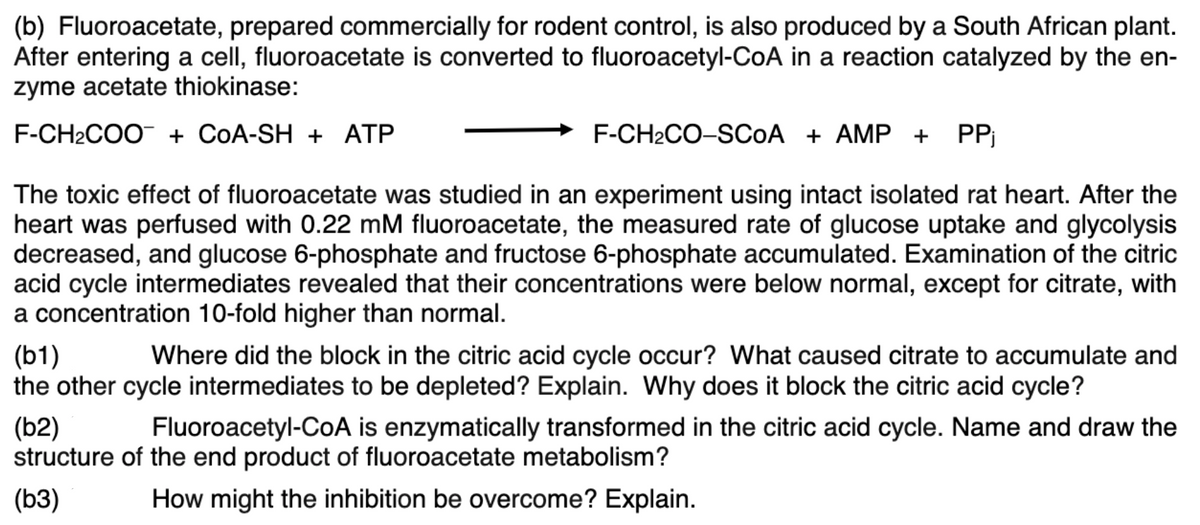p) Fluoroacetate, prepared commercially for rodent control, is also produced by a South African plant. fter entering a cell, fluoroacetate is converted to fluoroacetyl-CoA in a reaction catalyzed by the en- yme acetate thiokinase: -CH2COO¯ + CoA-SH + ATP F-CH2CO-SCOA + AMP + PPj he toxic effect of fluoroacetate was studied in an experiment using intact isolated rat heart. After the eart was perfused with 0.22 mM fluoroacetate, the measured rate of glucose uptake and glycolysis ecreased, and glucose 6-phosphate and fructose 6-phosphate accumulated. Examination of the citric cid cycle intermediates revealed that their concentrations were below normal, except for citrate, with concentration 10-fold higher than normal. 1) e other cycle intermediates to be depleted? Explain. Why does it block the citric acid cycle? Where did the block in the citric acid cycle occur? What caused citrate to accumulate and
Electron Transport Chain
The electron transport chain, also known as the electron transport system, is a group of proteins that transfer electrons through a membrane within mitochondria to create a gradient of protons that drives adenosine triphosphate (ATP)synthesis. The cell uses ATP as an energy source for metabolic processes and cellular functions. ETC involves series of reactions that convert redox energy from NADH (nicotinamide adenine dinucleotide (NAD) + hydrogen (H)) and FADH2(flavin adenine dinucleotide (FAD)) oxidation into proton-motive force(PMF), which is then used to synthesize ATP through conformational changes in the ATP synthase complex, a process known as oxidative phosphorylation.
Metabolism
Picture a campfire. It keeps the body warm on a cold night and provides light. To ensure that the fire keeps burning, fuel needs to be added(pieces of wood in this case). When a small piece is added, the fire burns bright for a bit and then dies down unless more wood is added. But, if too many pieces are placed at a time, the fire escalates and burns for a longer time, without actually burning away all the pieces that have been added. Many of them, especially the larger chunks or damp pieces, remain unburnt.
Cellular Respiration
Cellular respiration is the cellular process involved in the generation of adenosine triphosphate (ATP) molecules from the organic nutritional source obtained from the diet. It is a universal process observed in all types of life forms. The glucose (chemical formula C6H12O6) molecules are the preferred raw material for cell respiration as it possesses a simple structure and is highly efficient in nature.

Trending now
This is a popular solution!
Step by step
Solved in 2 steps with 2 images


